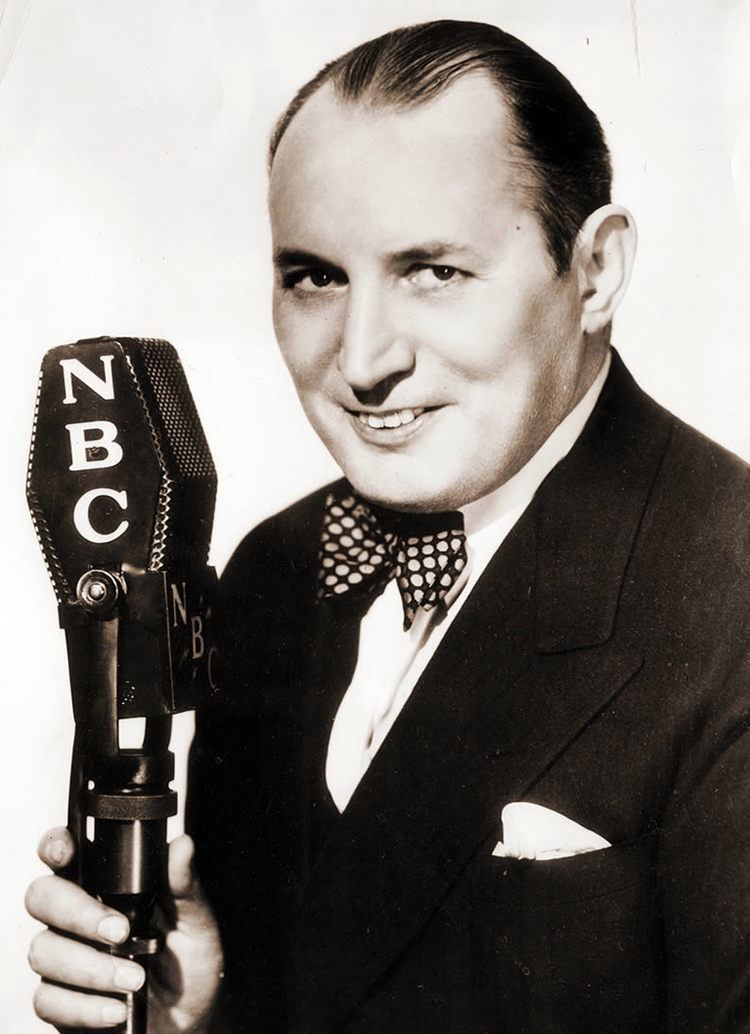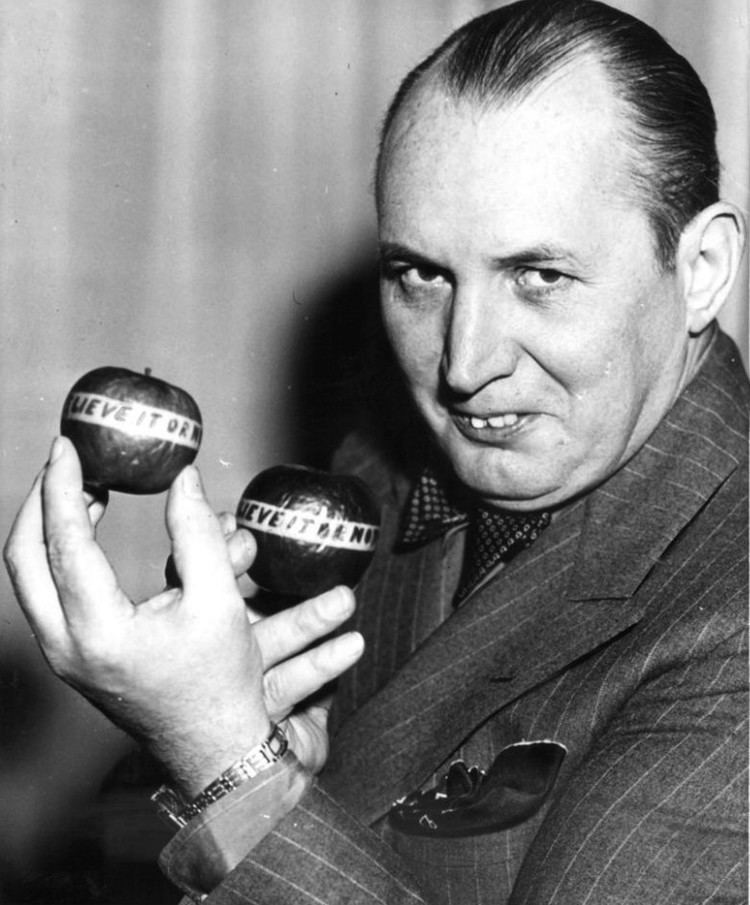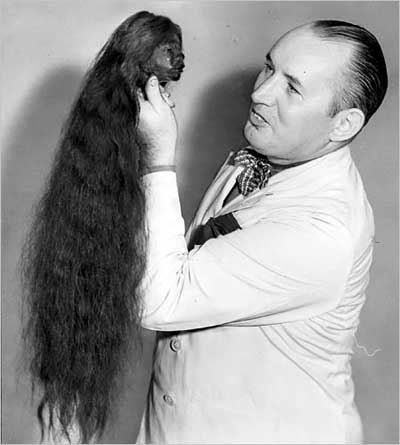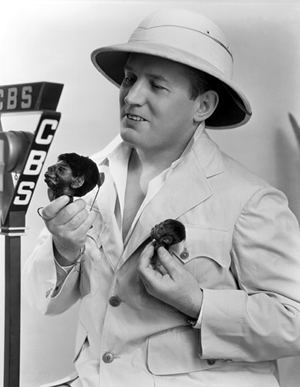Cause of death Heart attack Name Robert Ripley | Other names Mr. Ripley Nationality American | |
 | ||
Full Name LeRoy Robert Ripley Died May 27, 1949, New York City, New York, United States Known for Ripley's Believe It or Not! Parents Isaac Davis Ripley, Lillie Belle Yocka TV shows Ripley's Believe It or Not! Similar People Beatrice Roberts, Jack Palance, Jack Haley - Jr, Louis B Mayer, Chris Tiu | ||
Robert ripley around the world
Robert LeRoy Ripley (December 25, 1890 – May 27, 1949), better known by the name Robert Ripley, was an American cartoonist, entrepreneur, and amateur anthropologist who is known for creating the Ripley's Believe It or Not! newspaper panel series, radio show, and television show which feature odd facts from around the world.
Contents

Subjects covered in Ripley's cartoons and text ranged from sports feats to little-known facts about unusual and exotic sites. But what ensured the concept's popularity may have been that Ripley also included items submitted by readers, who supplied photographs of a wide variety of small-town American trivia ranging from unusually shaped vegetables to oddly marked domestic animals, all documented by photographs and then depicted by Ripley's drawings.

Ripley's Big Break
Biography
In 1919 Ripley married Beatrice Roberts. He made his first trip around the world in 1922, delineating a travel journal in installments. This ushered in a new topic for his cartoons: unusual and exotic foreign locales and cultures. Because he took the veracity of his work quite seriously, in 1923 Ripley hired a researcher and polyglot named Norbert Pearlroth as a full-time assistant. In 1926 his feature moved from the New York Globe to the New York Post.

Throughout the 1920s, Mr. Ripley continued to broaden the scope of his work and his popularity increased greatly. He published both a travel journal and a guide to the game of handball in 1925. In 1926, Ripley became the New York State handball champion and also wrote a book on boxing. With a proven track record as a versatile writer and artist, he attracted the attention of publishing mogul William Randolph Hearst, who managed the King Features Syndicate. In 1929, Hearst was responsible for Believe It or Not! making its syndicated debut in seventeen papers worldwide. With the success of this series assured, Ripley capitalized on his fame by getting the first book collection of his newspaper panel series published.

On November 3, 1929, he drew a panel in his syndicated cartoon saying "Believe It or Not, America has no national anthem." Despite the widespread belief that "The Star-Spangled Banner", with its lyrics by Francis Scott Key set to the music of the English drinking song "To Anacreon in Heaven", was the United States national anthem, Congress had never officially made it so. In 1931, John Philip Sousa published his opinion in favor of giving the song official status, stating that "it is the spirit of the music that inspires" as much as it is Key's "soul-stirring" words. By a law signed on March 3, 1931, by President Herbert Hoover, "The Star-Spangled Banner" was adopted as the national anthem of the United States.
The 1930s saw Ripley expand his presence into other media. In 1930, he began a fourteen-year run on radio and a nineteen-year association with the show's producer, Doug Storer. Funding for his celebrated travels around the world were provided by the Hearst organization, and Ripley recorded live radio shows underwater and from the sky, caves, snake pits, and foreign countries. The next year he hosted the first of a series of two dozen Believe It or Not! theatrical short films for Warner Bros. & Vitaphone, and King Features published a second collected volume of Believe it or Not! panels. He also appeared in a Vitaphone musical short, Seasons Greetings (1931), with Ruth Etting, Joe Penner, Ted Husing, Thelma White, Ray Collins, and others. After a trip to Asia in 1932, Ripley opened his first museum, the Odditorium, in Chicago in 1933. The concept was a success, and at one point there were Odditoriums in San Diego, Dallas, Cleveland, San Francisco, and New York City. By this point in his life, Ripley had been voted the most popular man in America by The New York Times, received an honorary degree from Dartmouth College, and visited 201 foreign countries.

During World War II, Ripley concentrated on charity pursuits rather than world travel, but after the war, he re-expanded his media efforts. In 1948, the year of the 20th anniversary of the Believe it or Not! cartoon series, the Believe it or Not! radio show drew to a close and was replaced with a Believe it or Not! television series. This was a rather bold move on Ripley's part because of the small number of Americans with access to television at this early time in the medium's development. Ripley completed only thirteen episodes of the series before he became incapacitated by severe health problems. He reportedly passed out during the filming of his final show.

His health worsened, and on May 27, 1949, at age 58, he succumbed to a heart attack in New York City. He was buried in his home town of Santa Rosa in the Oddfellows Lawn Cemetery, which is adjacent to the Santa Rosa Rural Cemetery.
The comic strip

Ripley's cartoon series was estimated to have 80 million readers worldwide, and it was said that he received more mail than the President of the United States. He became a wealthy man, with homes in New York and Florida, but he always retained close ties to his home town of Santa Rosa, California, and he made a point of bringing attention to The Church of the One Tree, a church built entirely from the wood of a single 300-ft (91.4-m)-tall redwood tree, which stands on the north side of Juilliard Park in downtown Santa Rosa.
Ripley claimed to be able to "prove every statement he made" because he worked with professional fact researcher Norbert Pearlroth, who assembled Believe it or Not!'s array of odd facts and also verified the small-town claims submitted by readers. Pearlroth spent 52 years as the feature's researcher, finding and verifying unusual facts for Ripley and, after Ripley's death, for the King Features syndicate editors who took over management of the Believe it or Not! panel.
Another employee who edited the newspaper cartoon series over the years was Lester Byck. Others who drew the series after Ripley's death include Don Wimmer; Joe Campbell (1946-1956); Art Slogg; Clem Gretter (1941-1949); Carl Dorese; Bob Clarke (1943-1944); Stan Randall; Paul Frehm (1938–1975), who became the panel's full-time artist in 1949; and his brother Walter Frehm (1948–1989).
Legacy
Ripley's ideas and legacy live on in Ripley Entertainment, a company bearing his name and owned since 1985 by the Jim Pattison Group, Canada's third-largest privately held company. Ripley Entertainment airs national television shows, features publications of oddities, and has holdings in a variety of public attractions, including Ripley's Aquarium, Ripley's Believe it or Not! Museums, Ripley's Haunted Adventure, Ripley's Mini-Golf and Arcade, Ripley's Moving Theater, Ripley's Sightseeing Trains, Guinness World Records Attractions, and Louis Tussaud's wax Museums.
